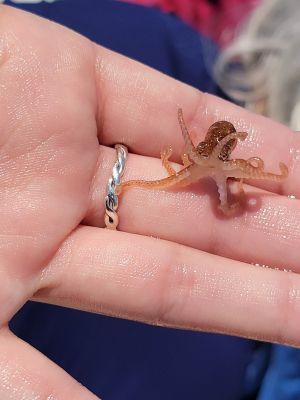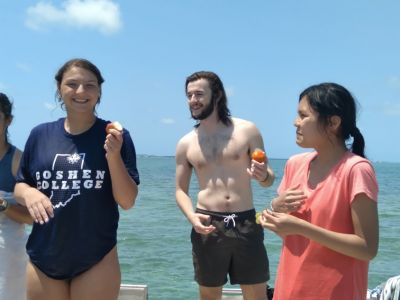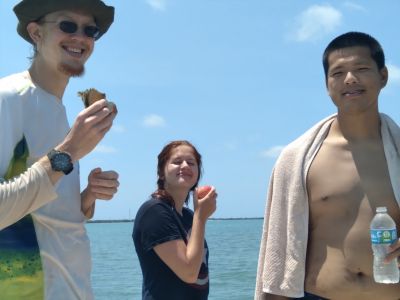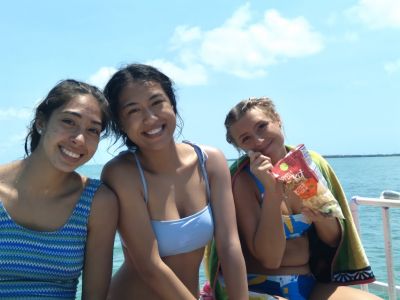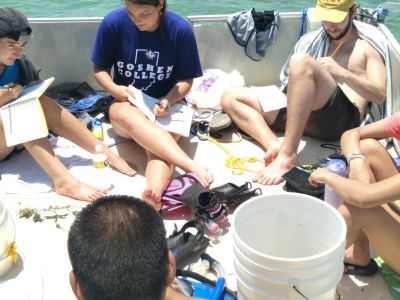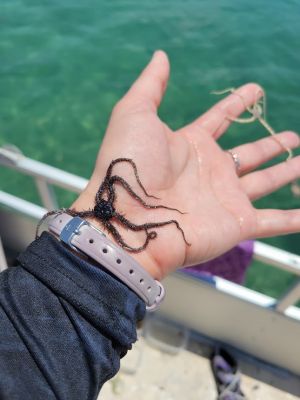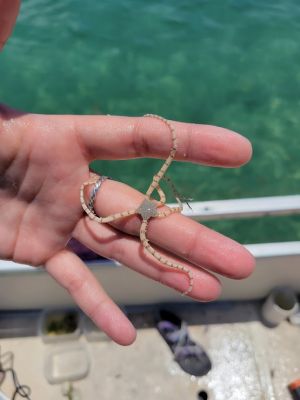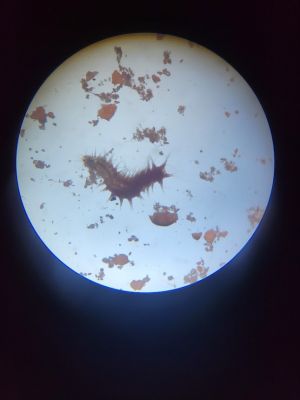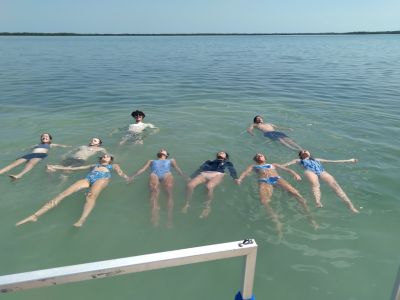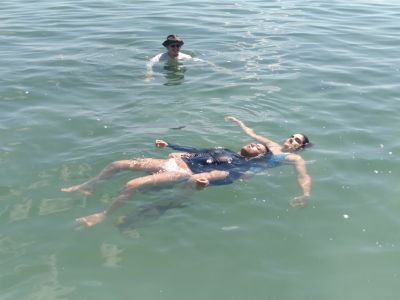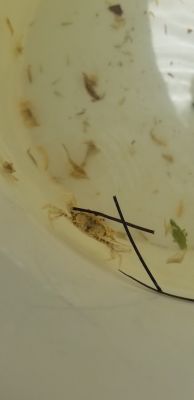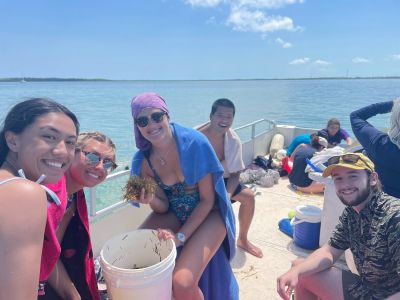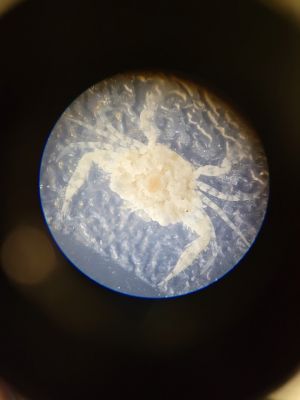We had many adventures on Friday! In the morning we discussed the marine creatures found in the epipelagic, the surface waters of the open ocean. Microscopic phytoplankton and zooplankton are found in the epipelagic, in addition to easily visible creatures like fish. “Microscopic” means a microscope lab is planned for the evening, which makes my microbiologist heart happy. Microorganisms play a key role in all ecological systems, including the marine system.
We spent most of our day at Old Dan Bank. Students observed a wide variety of organisms! We learned about the special habitat provided by sponges and Halimeda opuntia, a type of green algae. We were amazed to see many brittle stars, marine worms, and stomatopods (Gonodactylus oerstedii) come out of their hiding spots within these special habitats. We also spent time opening bivalve shells with the hope of finding the small octopus, Octopus joubini, and were successful in finding a few.
As we left Old Dan Bank to head home, research groups took time to trail a plankton net behind the boat to collect a sample for viewing under the microscope later in the evening. We also collected buckets of the floating brown algae, Sargassum. There is a unique community that lives within Sargassum, including the Sargassum fish (Histrio histrio), the Sargassum crab (Portunus sayi), and the Sargassum shrimp (Latreutes) – we were able to find examples of all three species in our samples.
As we headed through the Bight to finish our trip, the boat engine began to sputter and then die. We were out of gas! Luckily, SeaTow was able to bring us some gas and the students had fun swimming while we waited.
After an excellent supper of homemade pizza, we gathered in the Community Center at our home base for microscope work. We were able to identify amphipods, copepods, a small crab, and several unicellular protists. Even though it had been a long day, students were excited to see the wide variety of microscopic organisms present in their epipelagic samples. – Jody Saylor, professor
